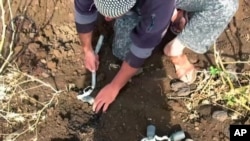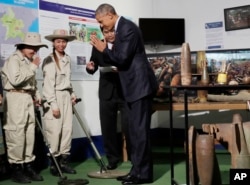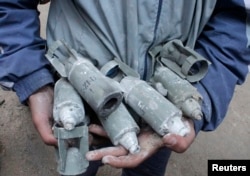A three-day conference on strengthening the treaty banning the use of cluster munitions has ended on a high note. More than 100 state parties have agreed to set a target date of 2030 for the clearance of these weapons from contaminated states.
Twenty-four countries are contaminated by cluster munitions, a type of bomb that scatters little bombs over an area, killing and maiming people indiscriminately. Unexploded bombs remain a threat to life long after a conflict is over.
More than 100 countries have ratified or acceded to the 2008 Convention on Cluster Munitions, which bans the use, transfer and stockpiling of the weapons.
The president of the convention, Henk Cor van der Kwast, says governments at this week's meeting agreed to strive for a world free of cluster munitions by 2030.
“That does imply that states that are affected work harder to get in time to clear the areas where cluster munitions still [are]. Also, for donor countries to work precisely towards this deadline and see where they can help affected countries to clear their territories,” he said.
Van der Kwast says 12 of the 14 contaminated member states have relatively few cluster munitions and should be able to have them cleared by 2020. However, he says it will take Laos and Iraq, which are heavily infested, until 2030 to complete the job.
He says the conference welcomes President Obama’s decision to give Laos $90 million over a three-year period for cluster munitions clearance.
The meeting also has condemned the use of cluster munitions in Syria and Yemen. Megan Burke, the director of the Cluster Munition Coalition, calls this a very important outcome because it adds to the growing stigma of the use of all cluster munitions.
“That exact stigma was what led the cluster munition producer Textron in the United States to announce last week that given the fact that there is basically no more market for cluster munitions, they will cease to produce cluster munitions by March of next year,” said Burke.
Burke says the impact of this will be huge because it means the United States will no longer be a producer of these weapons. As a consequence, she says, it will become more difficult for other countries to produce cluster munitions and will strengthen the norm against their use.










